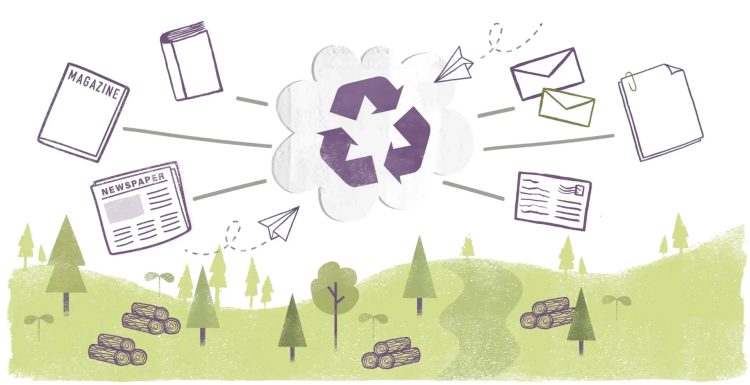
In recent years, the wider business community has evolved it's corporate responsibility and accountability for maintaining standards of ethical, social and environmental performance.
Paper and print has been the preferred communication medium for 2,000 years. In a multimedia world, it continues to be highly effective and, used responsibly, is inherently sustainable.
Addressing some of the inaccuracies and issues that surround the paper and print industry, there is an increasing need for industry and our customers to understand all the environmental issues in order to make more informed decisions about the use of paper and paper products.
As a large consumer of paper, the printing industry has a responsibility to continually improve its environmental credentials and address customer concerns, which are often the result of misleading or inaccurate information.
By fostering a better understanding of our industry’s environmental credentials, print and paper, through its myriad of uses from commercial applications to the basis of learning and creativity, remains an essential communication medium of choice.
Kale Print regard environmental awareness as an essential part of our business strategy. As such, we have put together some facts to help dispel many of the myths that surround our industry.

The Myth: Making paper destroys forests.
Fact: New Zealand has a total of 10.1 million hectares of forests, covering 38% of the land area. Of this, 8 million hectares are in indigenous forest. The area of plantation forest is 2.1 million hectares, of which 1.7 million hectares is productive area, with the balance being reserves and unplanted areas near water bodies and infrastructure.
New Zealand Planted Forest Portal 2015
----------------

The Myth: Paper and print is a wasteful product.
Fact: Paper is one of the most recycled products in the world.
----------------

The Myth: Planted Forests
are bad for the environment.
Fact: Well-managed production forests reduce the pressure on primary forests
and can provide many other environmental benefits.
Forests are essential for the transition to the green economy. Well managed production forests are a vital element in the global forestry mix.
Initiatives such as forest certification and voluntary guidelines can help maintain ecosystems and biodiversity, protect high conservation values, involve multiple stakeholders and aid
economic development.
----------------

The Myth: Paper is bad for the environment.
Fact: Paper is one of the few truly sustainable products.
----------------

The Myth: Paper production is a major cause of global greenhouse gas emissions.
Fact: Most of the energy used is renewable and carbon intensity is surprisingly low . About 5.6 million tonne of paper and cardboard waste was generated in 2016-17, or 229kg per capita. 60% was recycled.
----------------

The Myth: Only recycled paper should be used.
Fact: Virgin fibres from sustainably managed forests are needed to maintain the paper cycle.
----------------

The Myth: Electronic communication is more environmentally friendly than paper-based communication.
Fact: Electronic communication also has environmental impacts.
----------------

The Myth: Digital is always the preferred means of communication.
Fact: Many consumers value paper-based communication.
----------------
For more detailed statistics on each of these points visit;
www.twosides.co.nz




